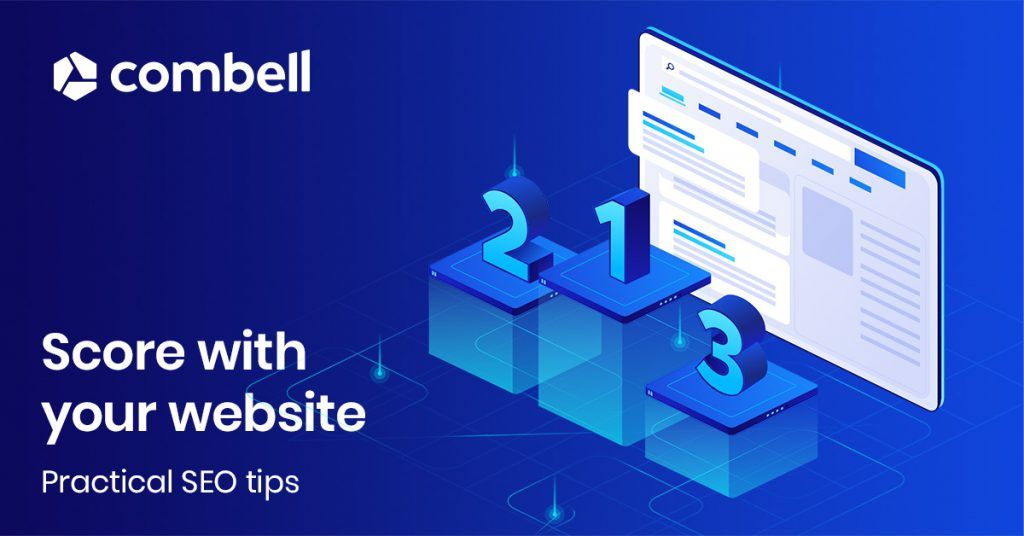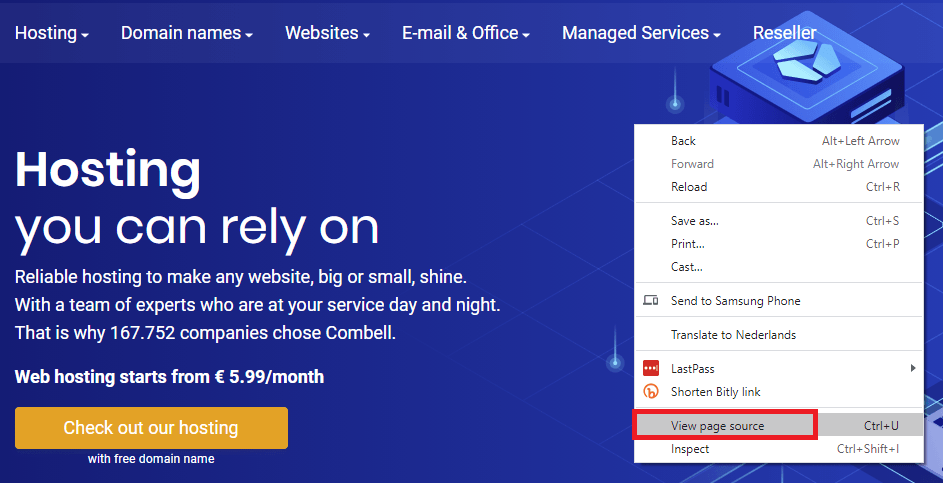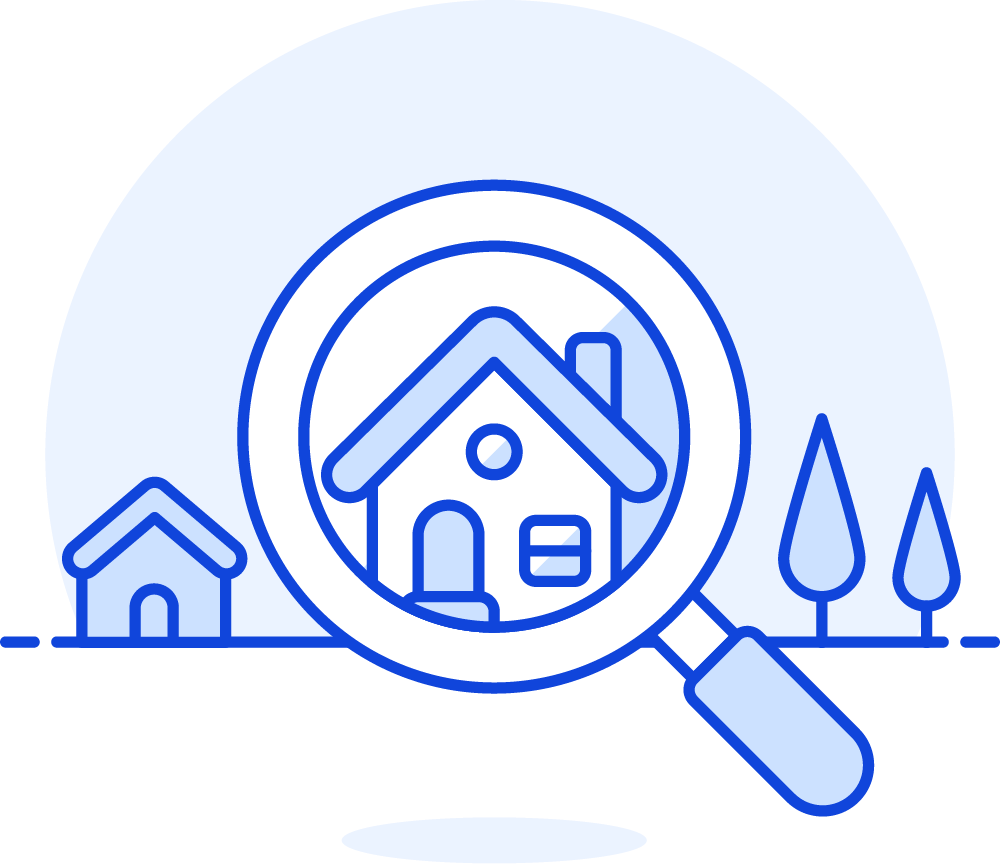5 practical tips for applying SEO

How should you proceed, in practice, to have your website rank higher in search engines? In this article, we are going to explore the different ways for applying SEO (Search Engine Optimisation) techniques to your website.
1. The basics of your SEO: the structure of your website
 As soon as you have determined which keywords you want to use to attract your visitors, you can start making your website search engine-friendly and apply the best practices for SEO effectively.
As soon as you have determined which keywords you want to use to attract your visitors, you can start making your website search engine-friendly and apply the best practices for SEO effectively.
First of all, the structure of your website is very important – you will determine how many pages you need to provide all the necessary information about your product or service, taking your keywords into account.
Obviously, you will start with a homepage, which is your main page. It goes without saying that you will optimise that page based on your main keyword. You will then create different subpages, each briefly covering a particular aspect of your service or product. On those subpages, you can focus on other keywords in your content.
Tip: Make sure that all the pages are linked together. However, do not make things too complicated – the more clicks your visitor needs to make to get to the page that contains the essence of your message, the less Google will consider that page to be relevant!
2. Applying on-page SEO: put your keywords in the right place
We are now going to focus on the technical side, because that is yet another important aspect of SEO. A web page is written in HTML code. For each page you visit, you can view that code by right-clicking and selecting 'View Page Source'.

You may not need this information if you have your website built by a developer. But it is definitely worth checking what your competitors have included in this code before you start implementing your SEO strategy.
You will notice that the code contains several elements. Some of them are very important for your SEO, as Google takes them into account to understand what your page is about:
- Title Tag: this is the title of your page. This is what your visitor sees, for example, in the tab of his browser. Ideally, you should include your keyword at the beginning of that title.
- Meta Description: this is the text that search engines display in their search results, right below the title of your page. This description is not important in itself for your SEO, but it will help you attract more visitors. Do your best to come up with a catchy text that will encourage Internet users to visit your website.
- URL: this is the web address of your website. Make sure that it contains your keyword, and that it is not too long.
- Headings (H1, H2, H3...): subtitles give your website a better structure. You should preferably use your keyword in your headings as well. Do not, however, go too far: including your keyword in every title would be pushing it.
- Images and videos: these can be optimised as well. Use good alt texts that clearly describe your images. And remember to give the file a name that contains your keyword, so not just 12345.jpg, but rather lawnmower_electric_bosch.jpg, for example.
Tip: Do you have a WordPress website? If so, you can use the Yoast plugin, which is an excellent tool to check whether your posting meets the various SEO requirements. You will also receive tips on how to improve your posting.
3. Your website must also be technically sound
 Google also takes various technical aspects of your website into account, in order to rank them higher or lower in its search results. These include the following:
Google also takes various technical aspects of your website into account, in order to rank them higher or lower in its search results. These include the following:
- HTTPS: Is the connection between your visitor's browser and your website secured via an HTTPS connection? In order to establish such a connection, you will need an SSL certificate. With Combell, you get a free Let's Encrypt certificate, but you can also opt for a more advanced certificate.
- Speed: Your website must load quickly. You can test how quickly your page loads using Google PageSpeed Insights. Are you dissatisfied with the results? Contact your web designer, who knows how to fix this problem. We at Combell have been able to improve the speed of our website quite a bit using some advanced techniques.
- Mobile-friendliness: Your website must be easy to use on any screen, including the smaller screens of smartphones. You can also test this using the Google Mobile-Friendliness Test.
- Searchability: Web crawlers (Google's search bots) must be able to access your site without any difficulty. The Google Search Console will search your site and provide tips on how to fix any problems.
4. Using off-page SEO: prove your quality through links pointing to your site
Google also ranks your website based on the number of websites that refer to your site, which is an indication that your site provides interesting content. In technical terms, this is called "link building": the more links from external sites point to your site, the more likely it is that your site will rank higher in search results.
Now, that is something that may encourage some people to cheat – you will often be asked by other websites to "exchange links". Our advice: do not answer them unless they provide content that is really in keeping with that of your own site.
The best way to get backlinks to your site is simply to write quality content. For example, you can also offer to write a blog post for that external site, in which you include a link to your own website. This way, you can play the game fairly.
If you want to check which sites have links that point to your website, you can also use tools such as Ahrefs, SEMrush or Majestic.
5. Applying a local SEO strategy: when you target customers near you
 If you have a web store, or if you provide services via the Internet, the location of your company is irrelevant. But for a plumber, a store where customers want to try out products before buying them, or a restaurant or shop that does not sell products online, the location is extremely important. In that case, you have to apply a local SEO strategy to make sure that customers in your area can find you. This can be done in different ways:
If you have a web store, or if you provide services via the Internet, the location of your company is irrelevant. But for a plumber, a store where customers want to try out products before buying them, or a restaurant or shop that does not sell products online, the location is extremely important. In that case, you have to apply a local SEO strategy to make sure that customers in your area can find you. This can be done in different ways:
- Location: Add the city where you are located to your keyword (e.g. lawnmower London).
- Google My Business: Create an account with this search service, in order for your business to be listed on Google Maps in the search results.
- Local directories: Have your site listed with as many directories as possible, such as visitlondon.co.uk, londonlocalbusinesses.co.uk, opening-times.co.uk, etc.
- Does your business have several offices? If so, your website should have a dedicated page for each office, where you can implement location-based SEO.
Tip: Make a list of all the local directories where your website appears; if you change addresses, phone numbers or opening times, do not forget to provide the new details to all those websites.
Remember that when you start using SEO, the loading speed of your website will also contribute to the success of all your SEO efforts. With hosting at Combell, you can rest assured that the technical infrastructure is in perfect working order!
Find out more about our hosting solutions


